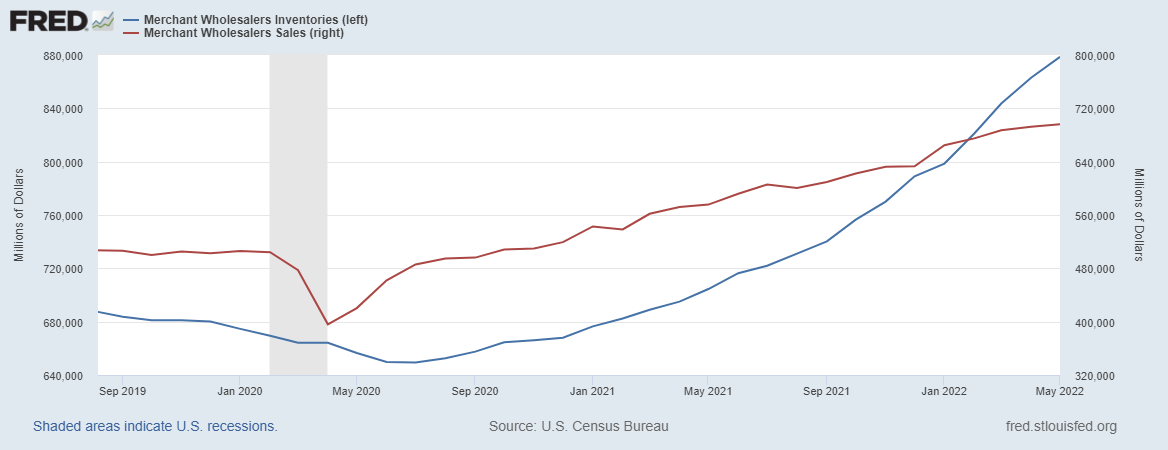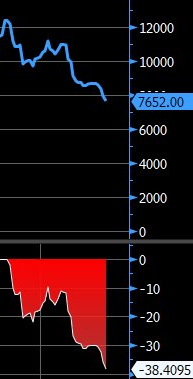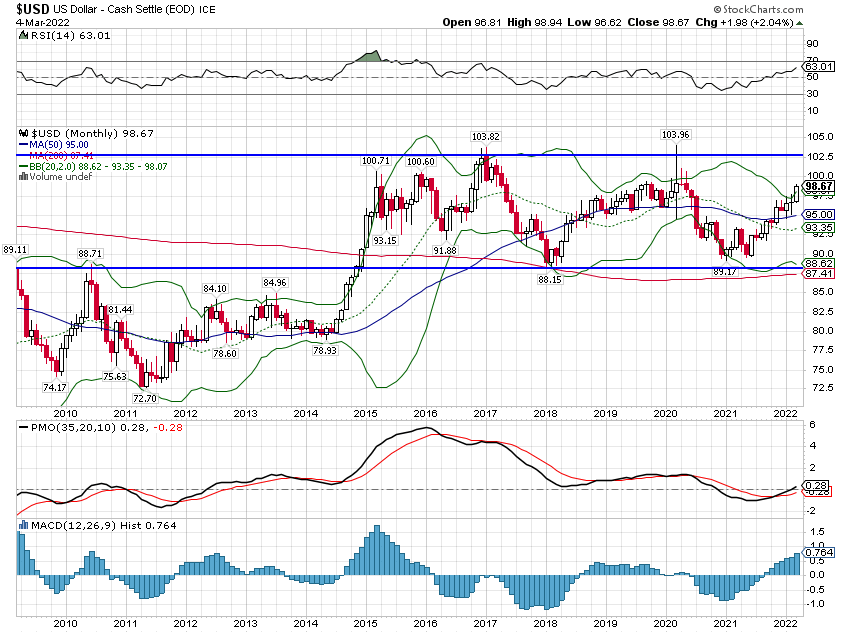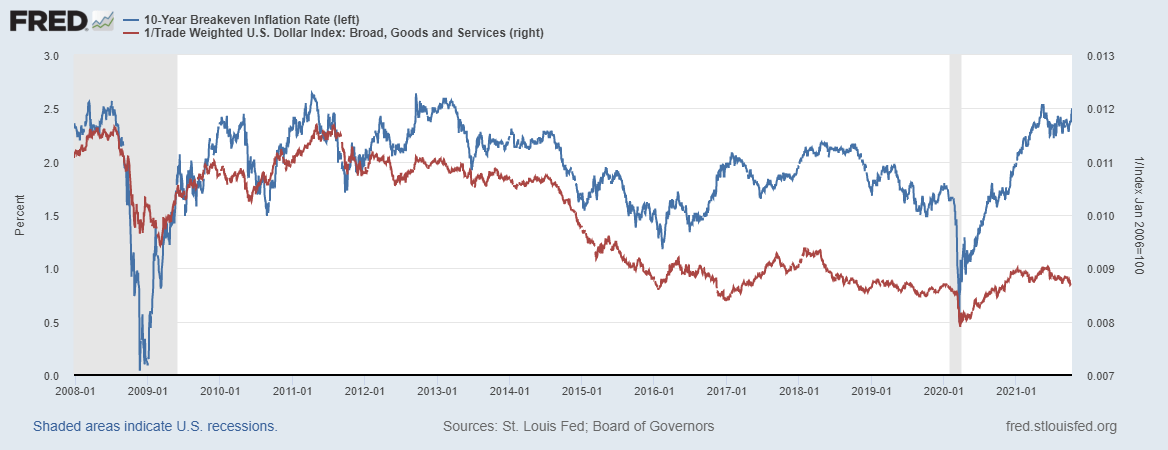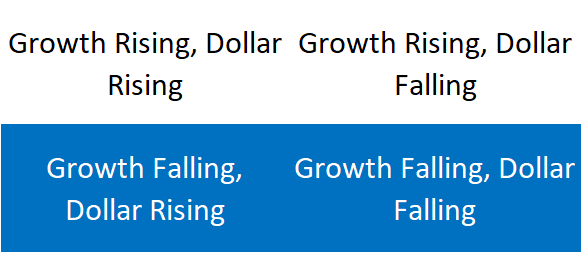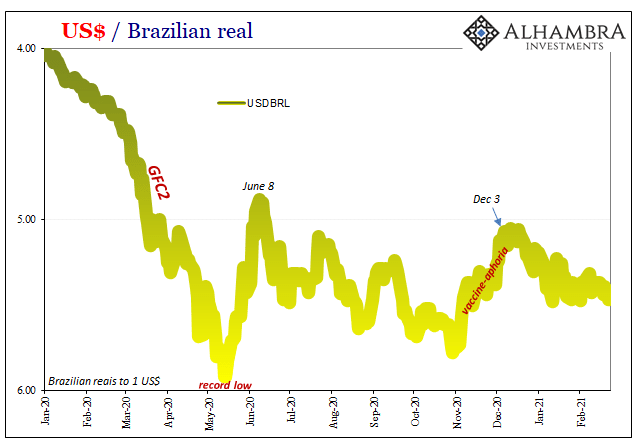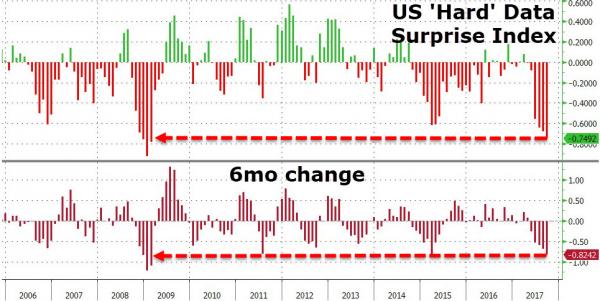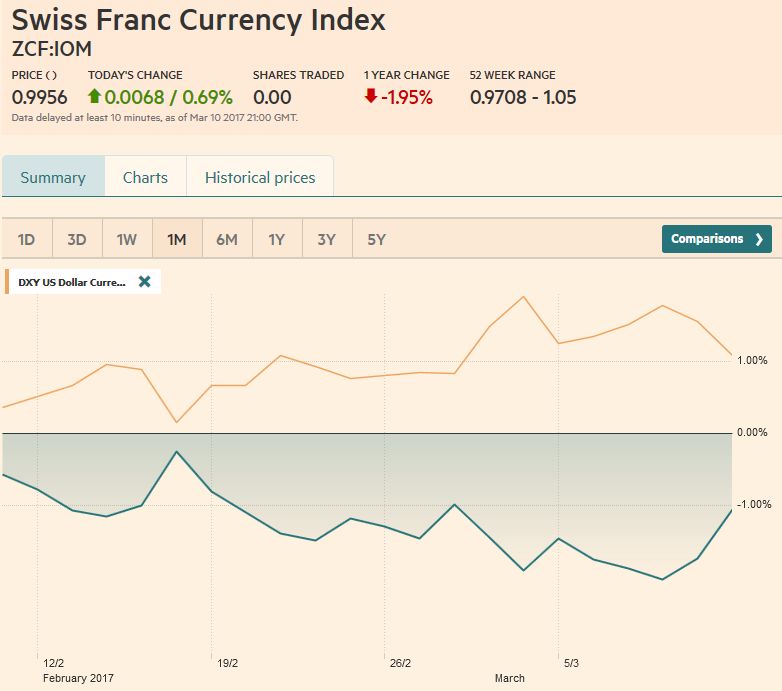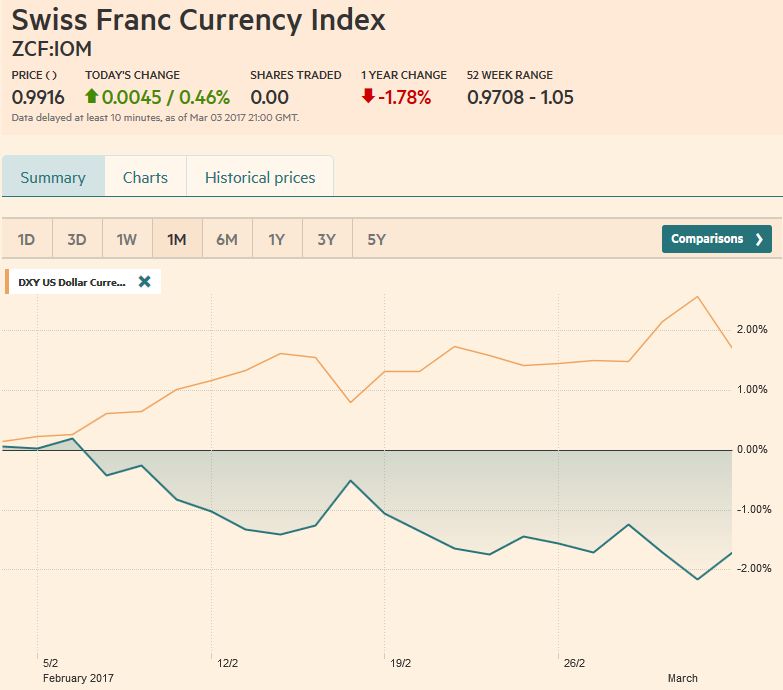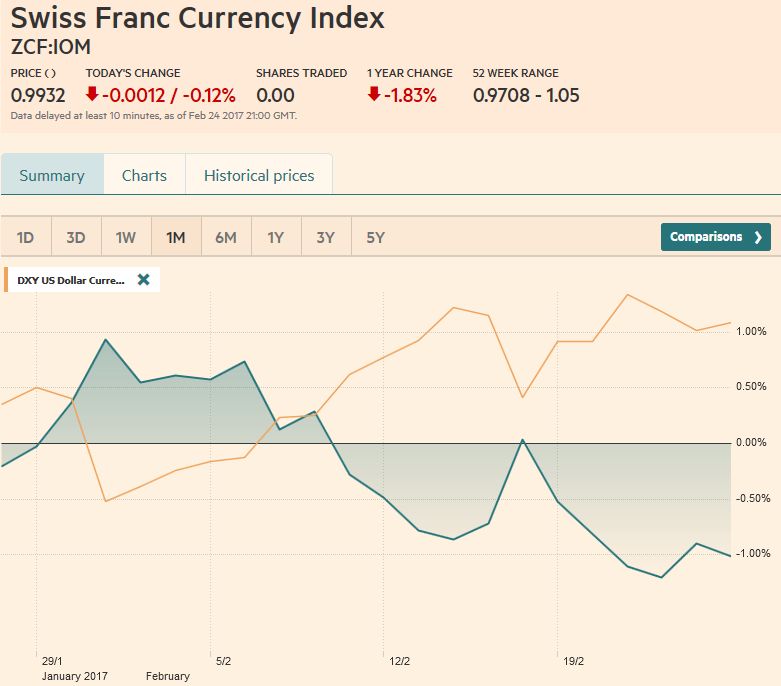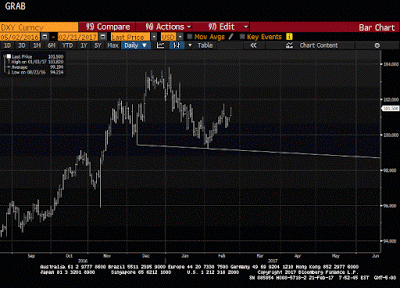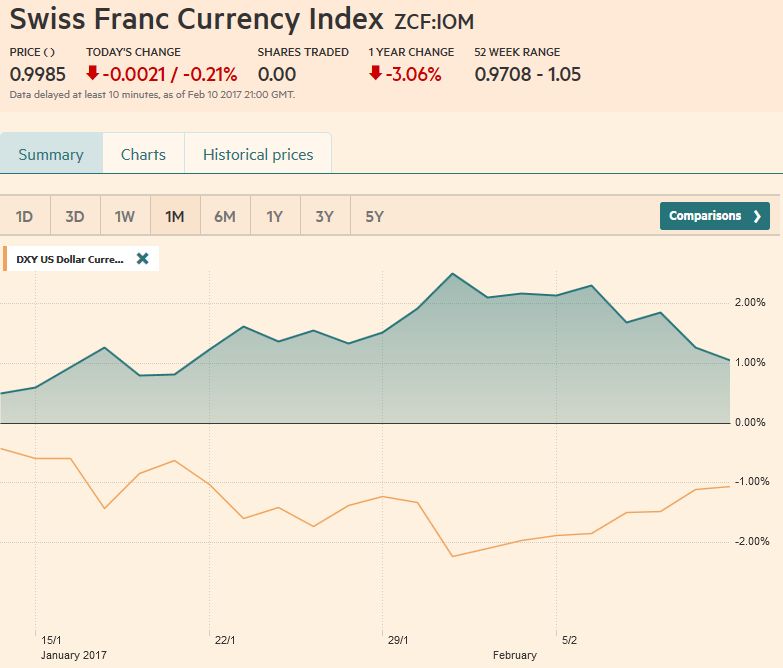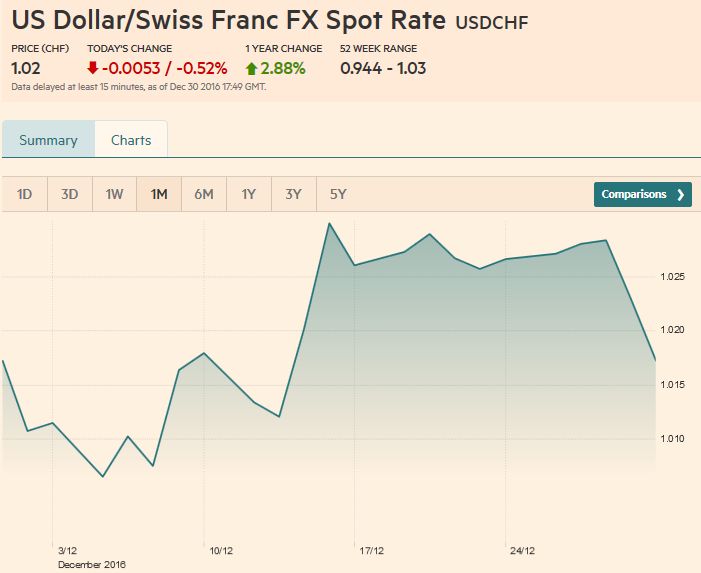The US dollar had a difficult week. The price action after the ECB meeting had undermined the technical tone, and the dollar took another leg down after the FOMC moved closer to the market expectation by reducing the number of rate hikes the median official thinks will be appropriate this year from four to two.
The US Dollar Index fell for the third consecutive week and the fifth week of the past seven. The minor gains ahead of the weekend failed to improve the technical tone. Technical indicators warn of additional losses. However, the market is stretched. It posted two closes to finish the week below the lower Bollinger Band.
The Dollar Index reached a low near 95.50 in the immediate response to the FOMC statement and new dot plot. This now denotes initial resistance. A move above 96.00-96.20 is needed to suggest a bottom is in place. On the downside the 94.00 and the October 2015 low near 93.80 the next downside targets.
After the euro rally that began in the middle of Draghi's post-ECB press conference, we cautioned that provided the $1.1040-$1.1060 breakout area held, the euro could rally to $1.13, based on our technical work. The euro reached a high near $1.1340 on March 17. Above here is the February high at $1.1375 and the mid-October 2015 high just shy of $1.1500.
The euro has bounced more than a nickel off the pre-ECB lows, and although it appears stretched, the RSI and MACDs are not signaling that a top is in place. A break of the $1.1200-$1.1235 area may be the first technical sign that the advance is tiring. A move below $1.1150 would be a more convincing sign that a top is in place.
The dollar slipped to marginal new lows since Q4 14 last week, a little below JPY110.70. The risk is on the downside unless the JPY112 area is resurfaced. Participants know that yen strength causes the BOJ discomfort, and continue to probe for its pain threshold. The balance between fear and greed may shift toward the former as the JPY110 area is approached. Yen strength risks lower import prices with knock-on effects on consumer prices. Seasonally, there is risk of repatriation ahead of the end of the fiscal year. The stronger the yen, the more likely the BOJ eases policy next month.
The broad dollar weakness likely blunts the fears of Brexit to lift sterling to its best levels in a month. Additional near-term sterling gains look likely. Assuming the $1.4500-$1.4520 area is overcome, sterling can rise toward the year's high set in early-February near $1.4670. We suspect that if that upper level is approached, Brexit hedging may reemerge. Initial support is seen near $1.4400 and then $1.4330.
The Canadian dollar's rise is as frustratingly as persistent as was its decline. Disappointing data are shrugged off, and constructive data are emphasized. The recovery in oil prices and a less hawkish Federal Reserve help as well. The US dollar has fallen below the uptrend line that goes back to 2014. The next target is near CAD1.2830-CAD1.2850. A move above CAD1.3150 may begin repairing the technical damage.
The Australian dollar ran up to almost $0.7700 before the weekend, but the momentum faltered, and the close was poor. It stopped near the 61.8% retracement of the decline from May 2014's high near $0.8165. Support is seen in the $0.7550-$0.7580 area, but it may take a break of $0.7500 to give confidence that a high is in place. Since the middle of January, the Aussie has rallied 12.7%. The speculative community has gone long in the futures market and may be prone to take profits once they are convinced that the upside momentum has faltered.
The May light sweet crude oil futures contract has advanced for four consecutive weeks. The prospect of a wider freeze in production, though excluding Iran, for as early as next month, fanned hopes that the bottom is in place. The slower rise in US oil inventories also helped lift the already improving sentiment. Above $42.00 a barrel signal a move toward $45.00. If one thinks that prices made a double bottom (in January and February near $30, the measuring objective is also near $45.00. Support is seen in ahead of $40.
US 10-year Treasury yields rose from 1.53% on February 11 to 2.0% before the Fed's decision this past week. With a weaker US dollar and higher commodity prices, US Treasury yields may not fall much below 1.80% without a new disruption that diminishes the appetite for risk. The June 10-year note futures finished last week near its 20-day moving average (129-15) for the first time in two weeks. Retracement targets are found between 129-25 and 130-30. Technical indicators are constructive.
The S&P 500 rose for a fifth consecutive week. It closed the gap created by the lower opening on the first trading session of the year, and the much-tracked index is higher on the year. The Japanese Nikkei and German DAX also gapped lower to start the year, but those gaps have not been filled. The S&P 500 is up fractionally on the year. The only other G7 bourse higher on the year is Canada with a 4% rise year-to-date. The "W" bottom that we had anticipated has a measuring objective near 2100. Since February 11, the S&P 500 has rallied more than 13%. Although the market is getting stretched, the technical indicators suggest there is a bit more upside.
With negative interest rates in Europe and Japan, the forgone yield of owning gold is not a hindrance. However, the risk-on attitude may be sapping some of gold's strength. The high in gold made on March 11 (~$1285) was not confirmed by the RSI and MACDs. This bearish divergence warns of downside risks. Initial support is near last week's lows (~$1226), and a break signals a near-term move toward $1200.
Tags: Dollar Index






















